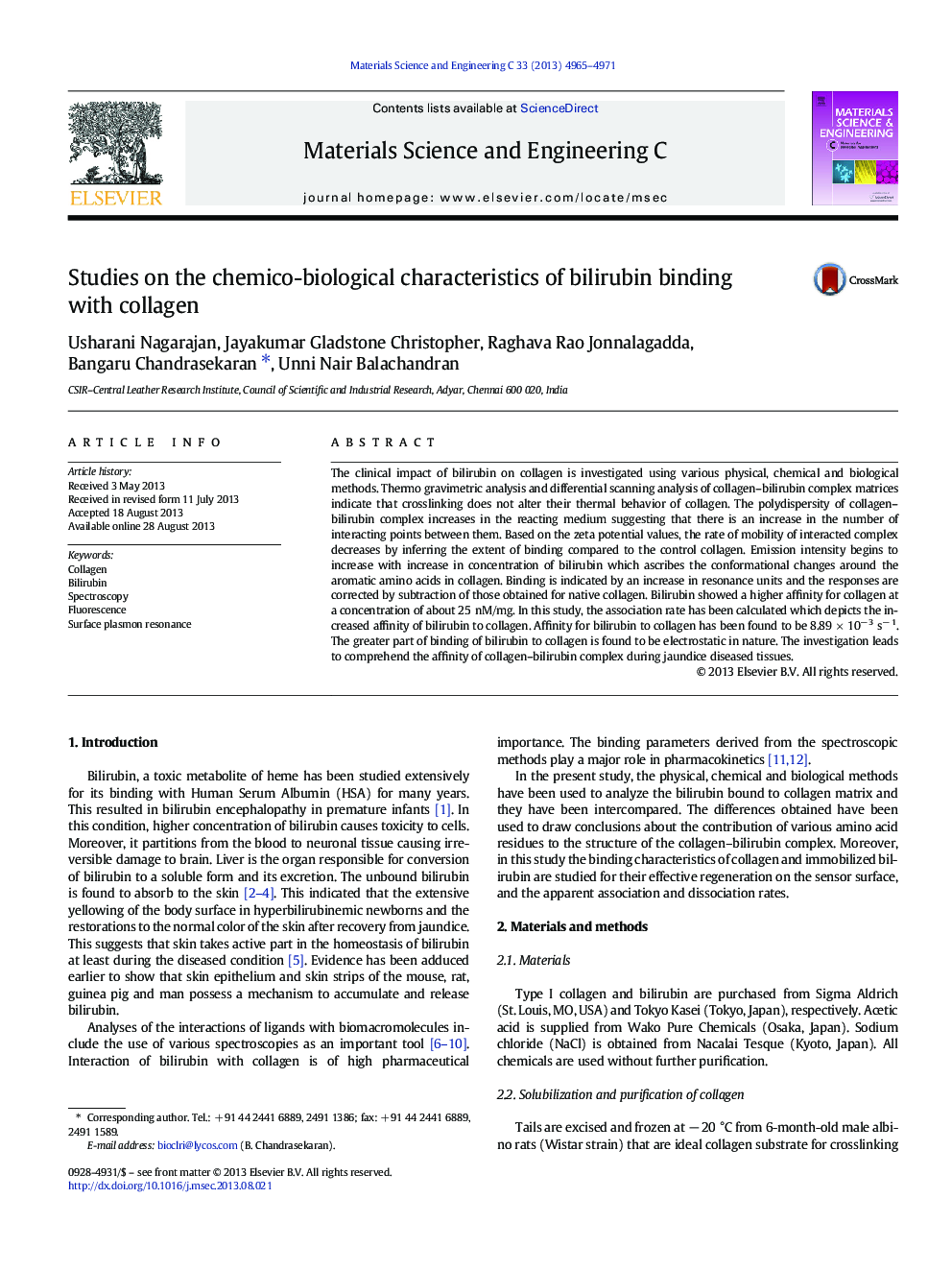| Article ID | Journal | Published Year | Pages | File Type |
|---|---|---|---|---|
| 1429525 | Materials Science and Engineering: C | 2013 | 7 Pages |
•Bilirubin showed a higher affinity at a concentration of about 25 nM/mg.•Increase in bilirubin concentration influences the polydispersity.•Emission intensity found to increase with increase in concentration of bilirubin.•Binding of bilirubin to collagen was electrostatic in nature.•Affinity for bilirubin to collagen has been found to be 8.8904 × 10− 3 s− 1.
The clinical impact of bilirubin on collagen is investigated using various physical, chemical and biological methods. Thermo gravimetric analysis and differential scanning analysis of collagen–bilirubin complex matrices indicate that crosslinking does not alter their thermal behavior of collagen. The polydispersity of collagen–bilirubin complex increases in the reacting medium suggesting that there is an increase in the number of interacting points between them. Based on the zeta potential values, the rate of mobility of interacted complex decreases by inferring the extent of binding compared to the control collagen. Emission intensity begins to increase with increase in concentration of bilirubin which ascribes the conformational changes around the aromatic amino acids in collagen. Binding is indicated by an increase in resonance units and the responses are corrected by subtraction of those obtained for native collagen. Bilirubin showed a higher affinity for collagen at a concentration of about 25 nM/mg. In this study, the association rate has been calculated which depicts the increased affinity of bilirubin to collagen. Affinity for bilirubin to collagen has been found to be 8.89 × 10− 3 s− 1. The greater part of binding of bilirubin to collagen is found to be electrostatic in nature. The investigation leads to comprehend the affinity of collagen–bilirubin complex during jaundice diseased tissues.
